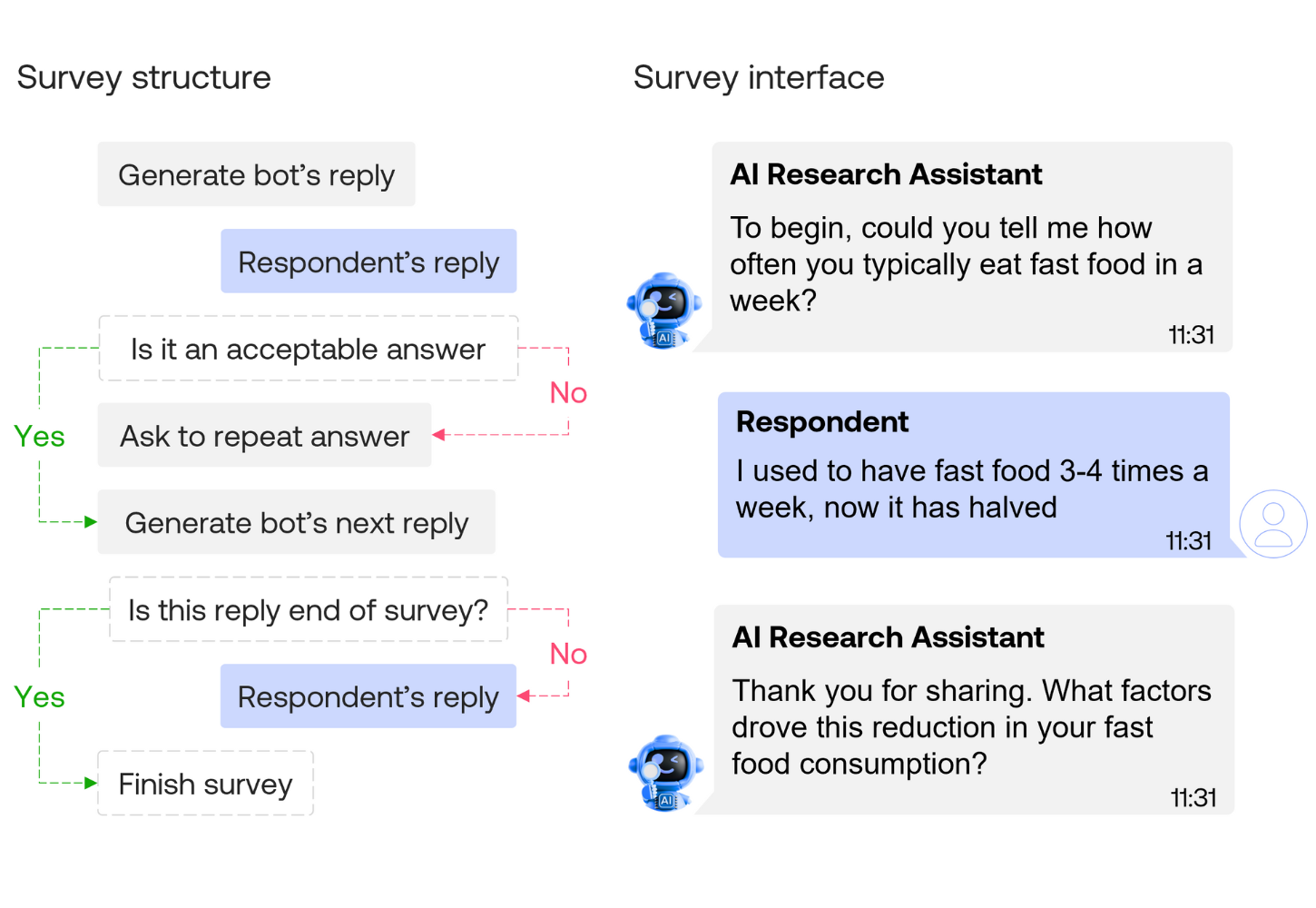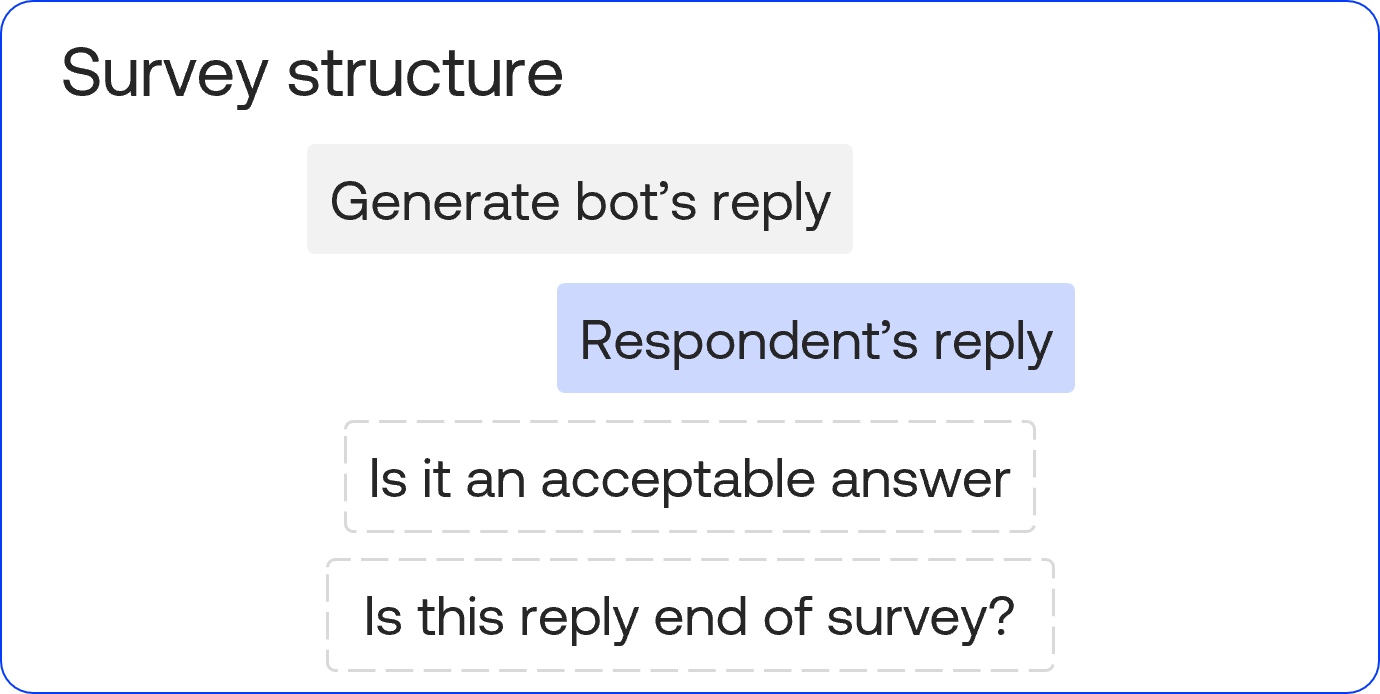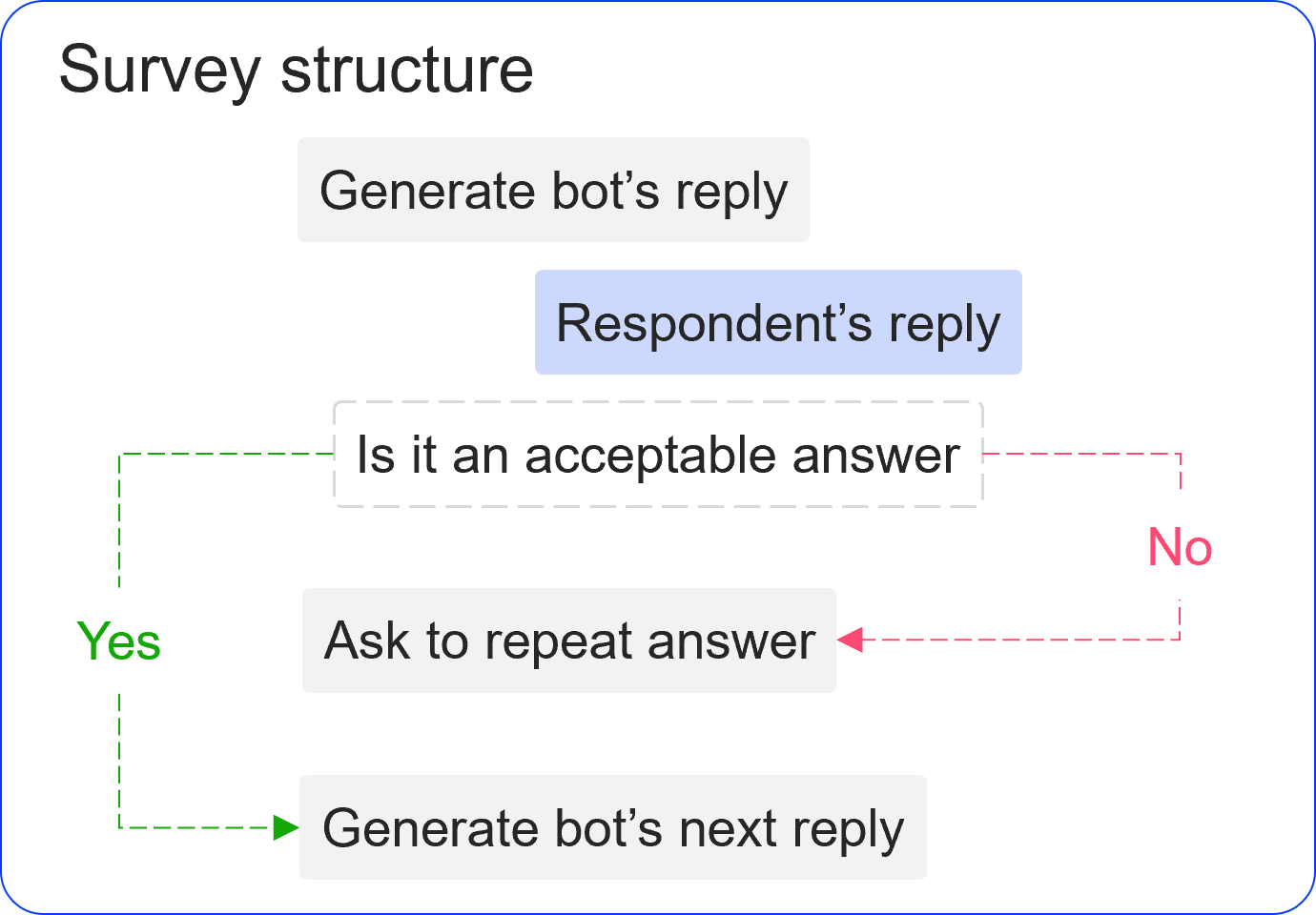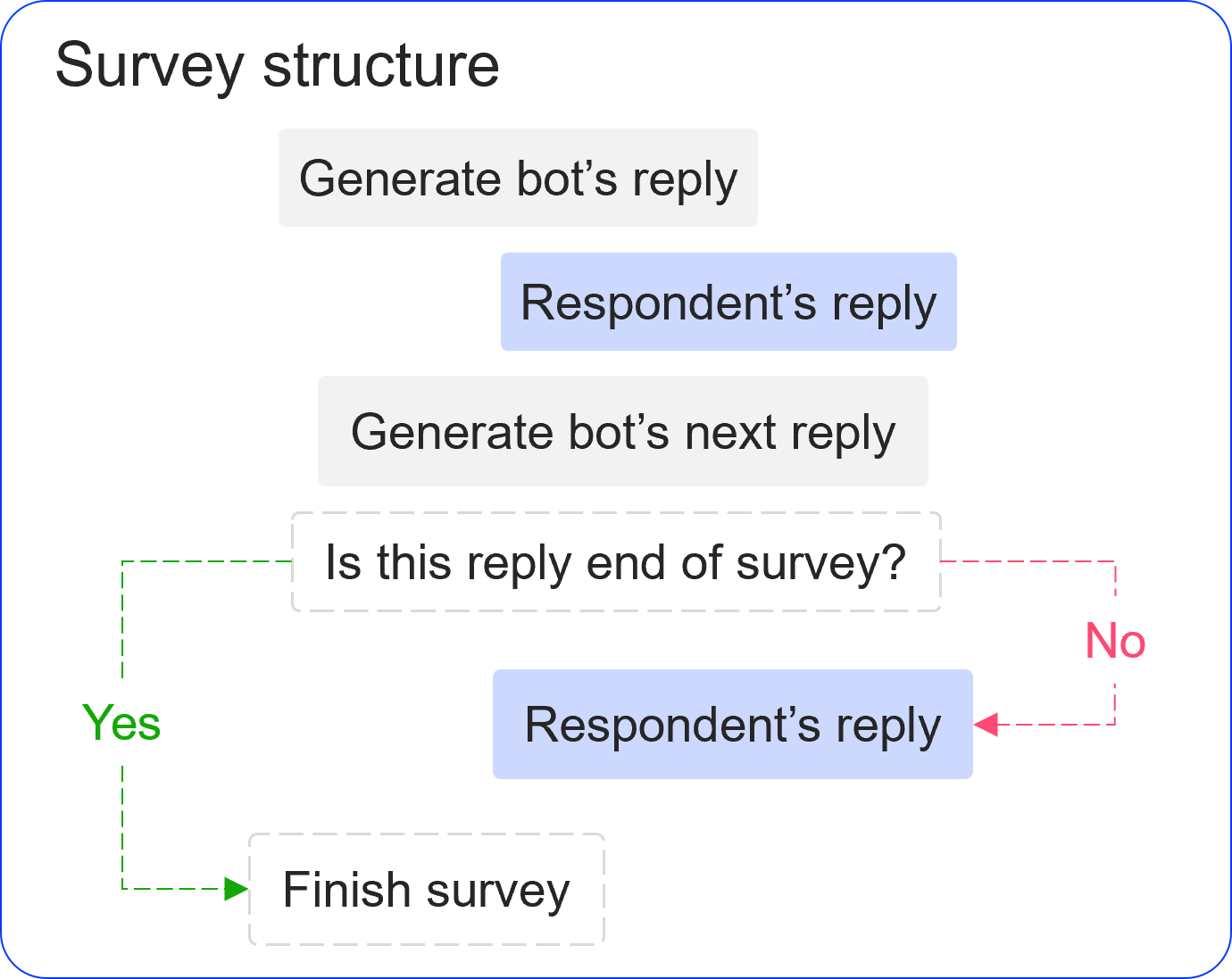Discover what conversational surveys are, how they work, and how to set them up effectively.
Conversational Survey
Engage your consumers with interactive chat surveys
Exploring an emerging consumer trend or complex decision-making processes? Conversational surveys let you address your core research questions, while remaining adaptive to follow up on emerging themes from answers, uncovering the nuanced "why" behind consumer decisions that often remain hidden in static, fixed-format surveys.
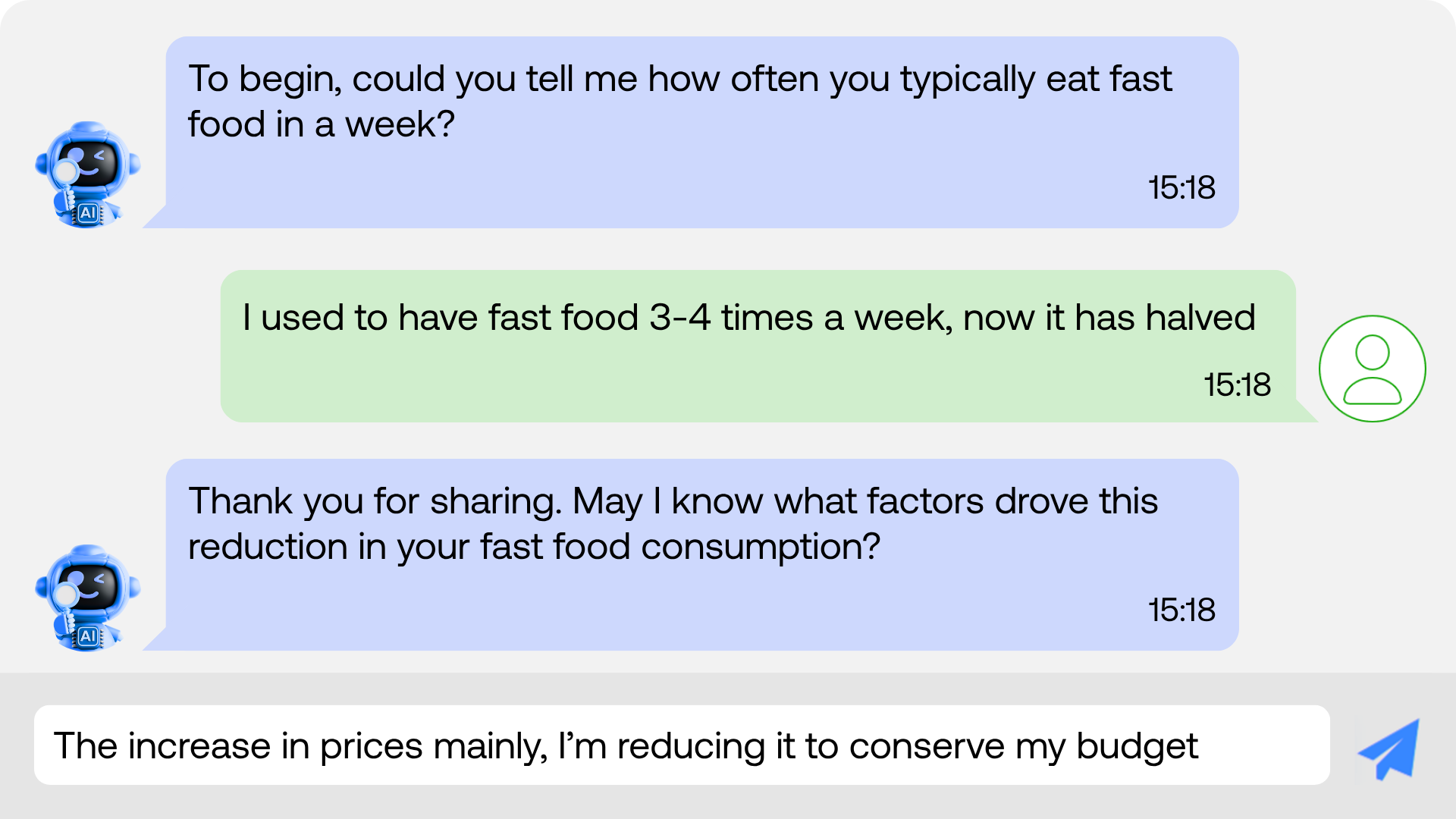
To help you get the most out of conversational surveys, Conjointly’s new 6-minute explainer video breaks down how they work and shows you how to set them up effectively.
This newsletter includes survey examples you can try right now, plus written explanations to help you get started.
Master conversational surveys in six minutes
Understand how conversational surveys deliver qualitative insights at a quantitative scale with this comprehensive video guide, visually demonstrating what they are, how they work behind the scenes, setup processes, and the insights you can expect.
Experience conversational surveys in action
What makes conversational surveys different from typical surveys lies in their ability to create natural, flowing dialogues based on participant’s responses. This enables you to explore unexpected themes that emerge during conversations and gather detailed perspectives with contextual information.
You can experience this firsthand with these survey examples:
- Fast food consumption habits and decision factors: This survey explores how multiple factors, from price changes to health and environmental concerns, influence fast food choices, uncovering the complex trade-offs consumers make in different situations.
- Breakfast cereal attribute preferences: This survey aims to identify if there are emerging cereal characteristics that drive purchase decisions alongside traditional preferences like taste, flavour, and brand.
- The impact of AI on consumers' product research: This survey investigates how AI-powered search results and recommendations affect consumers' product research behaviours and buying decisions.
How conversational surveys deliver in-depth insights
Conversational surveys operate through three key processes that occur within each interaction.
1. Conversation generation
The AI generates replies based on the main survey prompt, adhering to the set behaviour and tone, while ensuring all research questions are covered.2. Response validation
The AI checks if answers are acceptable, meaning they are on-topic and do not contain random or nonsensical inputs.
If the answer doesn’t meet the criteria you’ve defined, the system will repeat the original question rather than proceeding to the next question.
You can see an actual example of this interaction in Conjointly's recent case study, where the AI requested clarifications when participants responded with brief answers like "I don't know".
3. Conversation conclusion
The AI monitors each reply for predetermined ending phrases to conclude conversations naturally and automatically marks the respondent’s status as complete, preventing the survey from running too long.
If the endpoint has not been reached, the conversation continues by processing the response and generate the next contextual reply.
This three-process cycle repeats with every exchange, creating natural dialogues that mimic interview sessions. Conjointly’s recent case study showed this approach generates responses typically 2-3 times longer than open-ended questions, while maintaining similar participant satisfaction levels.
Thanks to Deep probe, you can transform free-flowing conversational survey transcripts into structured, measurable outputs in minutes. Extract specific keywords, identify frequent topics, or group respondents by response themes without requiring days of manual analysis work.
Setting up conversational surveys effectively
When setting up a conversational survey on Conjointly, you’ll need to specify three key prompts:
- Main survey prompt: Defines the AI interviewer’s overall behaviour and conversation style, while establishing the survey content and key research questions to be covered.
- Prompt to check the end of the conversation: Helps the AI detect when either the chat bot or respondent uses common conversation ending phrases.
- Prompt to check acceptable answers: Helps the AI evaluate when a response is complete and useful, or when it should ask for more detail.
Effective conversational surveys depend on well-crafted prompts. Conjointly's expert researchers can collaborate with you to engineer and refine your prompts, ensuring your surveys capture the insights you need while maintaining research rigour.
